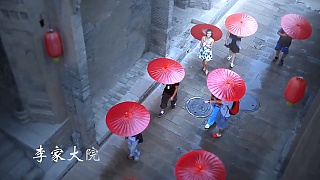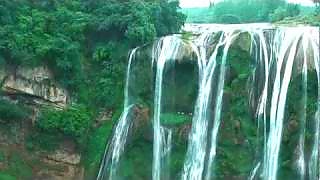
|
ShānXī province lies to the west / south-west of HeBei and BeiJing. The capital is TaiYuan.
This film focuses on the plethora of impressive ancient sites and natural wonders; these include :
* JinCi Temple 25 kilometers (16 miles) south west of TaiYuan, noted for its Song dynasty paintings and architecture. Founded about 1,400 years ago and expanded during the following centuries, this site has a diverse collection of more than 100 sculptures, buildings, terraces and bridges.
* The Ancient City of PingYao is a UNESCO World Heritage Site near TaiYuan. Once a great financial center of China, it is noted for its preservation of many features of northern Han Chinese culture, architecture and way of life during the Ming and Qing dynasties.
* The YunGang Grottoes, its literal translation being the Cloud Ridge Caves, are shallow caves near DaTong. There are over 50,000 carved images and statues of Buddhas and Boddhisatvas within these grottoes, ranging from 4 centimeters to 7 meters tall. This UNESCO World Heritage Site consists of 252 caves noted for their collection of 5th and 6th century Buddhist grotto sculptures and reliefs.
* Mount WuTai Shan is the highest point in the province. It is known as the residence of the bodhisattva Manjusri, and as a result is also a major Buddhist pilgrimage destination, with many temples and natural sights. Points of interest include Tang Dynasty (618−907) era timber halls located at NanChan Temple and FoGuang Temple, as well as a giant white stupa at TaYuan Temple built during the Ming Dynasty (1368−1644).
* Mount HengShan, one of the 'Five Great Peaks' of China, is also a major Taoist site.
* The Hanging Temple (XuanKong Temple) is located on the side of a cliff, 75 meters (245 feet) up, and has survived for 1400 years despite earthquakes in the area.
* The Pagoda of FoGong Temple built in 1056 during the Liao dynasty. It is octagonal with nine levels (five are visible from outside), and at 67 meters (220 feet) in height, it is currently the tallest wooden pagoda in the world and also the oldest fully wooden pagoda in China.
* HuKou Waterfall on the Yellow River. At 50 meters high it is the second highest waterfall in China.
~~~ A very beautiful film - don't miss it ...
A veritable masterclass in video shooting, storytelling, editing and sound mixing.
|
 Buddhist cave shrines
Buddhist cave shrines




